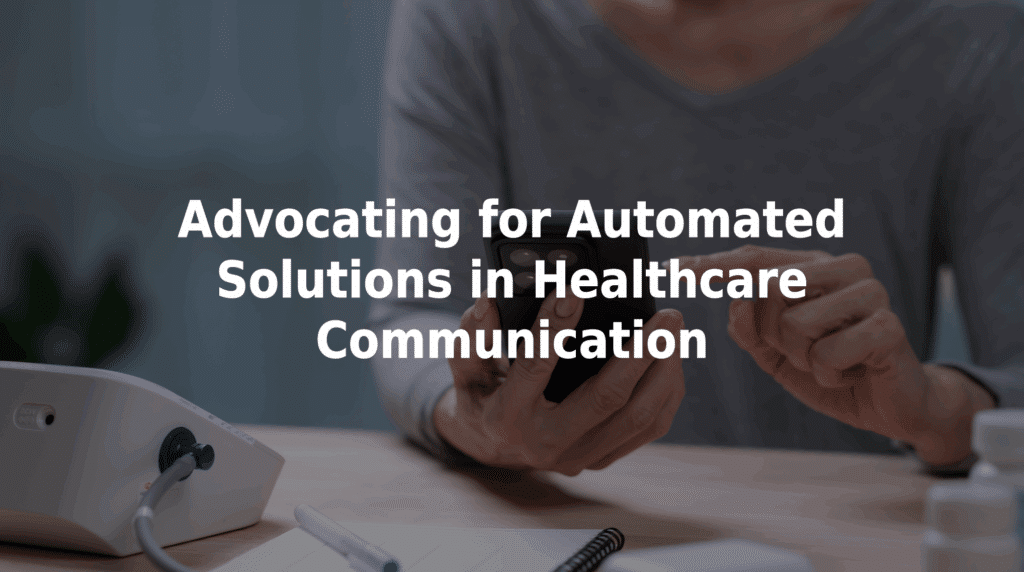Advocating for Automated Solutions in Healthcare Communication
As call volumes increase, staffing remains tight, and patients expect faster responses, automation offers a practical path forward for frontline healthcare workers. Below, we explore the benefits of advocating for automated solutions in healthcare communication, and how you can position these tools to gain leadership support and cross-team alignment.
Why Advocacy Matters in Healthcare Operations
Operational innovation doesn’t happen in isolation. While automation can save time, reduce errors, and enhance care, it often requires:
- Buy-in from clinical and administrative leadership.
- Education for frontline staff.
- Integration with established workflows.
- Budget justification and ROI tracking.
That’s why clinical operations managers must serve as internal advocates — not only recognizing the value of automation, but also championing its adoption.
Key Benefits That Support Your Advocacy Efforts
1. Increased Efficiency Without Added Headcount
Automated message intake systems reduce manual documentation, streamline triage workflows, and minimize redundant calls — allowing your team to do more without the need for additional full-time staff.
2. Improved Patient Communication and Satisfaction
Tools like secure chat and guided intake forms allow patients to expedite their requests directly to their providers without having to wait on hold.
3. Better Clinical Accuracy and Documentation
Structured intake ensures that symptom details are complete, consistent, and properly routed — improving provider confidence and reducing liability risk.
4. Lower Operational Costs Over Time
Reduced call center workload, fewer nurse escalations, and decreased message errors will drive sustainable cost savings in the first year.
How to Advocate for Automation Successfully
Align It With Your Strategic Goals
Frame automation as a solution to problems your leadership already wants to solve — like improving patient outcomes, saving resources, and reducing staff burnout.
Provide Data-Driven Use Cases
Use statistics and case studies from trusted sources (e.g., AMA, AHA, or pilot programs) to show the real-world impact of automation. Include metrics like time savings, call volume reduction, and cost per message.
Highlight Staff Benefits, Not Threats
Make it clear that automation is designed to support your staff — not replace them. This is especially true for overworked nurses, triage teams, and nonclinical call center operators.
Run a Pilot Program
Choose a common workflow like medication refills and symptom follow-ups to demonstrate automation’s impact.
Gather Feedback and Celebrate Successes
Track improvements and invite testimonials from staff and patients. Share these across departments to build broader support and reinforce the tool’s value.
MedMessage Automate: A Tool Worth Championing
TriageLogic’s MedMessage Automate is an AI-driven message intake system designed for healthcare providers who want to give their patients the ability to self-report their symptoms and reduce clinical delays.
As an advocate, you can promote how this platform offers:
- 24/7 automated intake without added call center staff.
- Intelligent symptom routing and escalation triggers for a high degree of accuracy.
- Improved documentation that integrates directly with EHRs.
- Positive ROI demonstrated in real-world clinical settings.
MedMessage Automate can make your teams more efficient, your intake requests more accurate, and your patients more satisfied.
Be the Voice for Smarter Healthcare Communication
Take the lead in advocating for solutions that reduce staff burnout and benefit the patient experience. Contact us today to learn more about our automated intake solution and schedule a demo!

